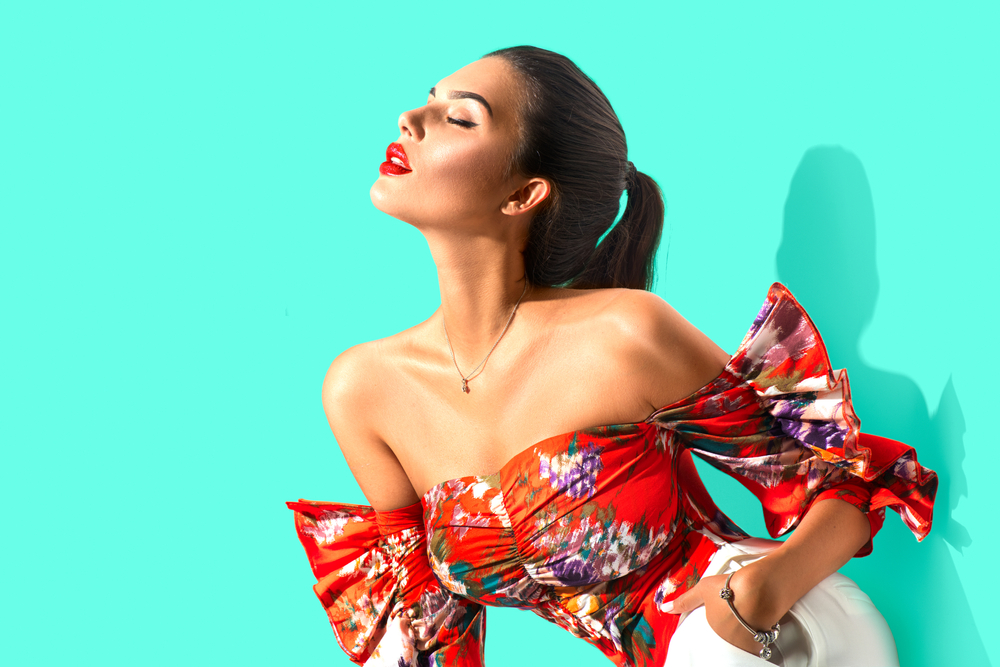
Introduction
In today's world, the modeling industry is often perceived as a glamorous and extravagant field where individuals showcase their beauty and fashion sense. From glossy magazine covers to high-end fashion shows, modelling has infiltrated every aspect of our visual culture. However, beneath the surface, there lies a fascinating blend of artistry and science that goes into creating those iconic images. In this article, we will delve into the world of modeling, exploring the techniques, psychology, and reality behind the captivating photoshoots that enthrall us.
The Artistry of Modeling
At its core, modeling is an art form that requires skilled individuals to bring life, expression, and emotion to a photograph. Models aren't just beautiful faces; they are storytellers who convey a narrative through their poses, gazes, and gestures. Like actors on a stage, models must convey a range of emotions that resonate with viewers. From exuding confidence for a luxury brand campaign to capturing vulnerability for a high fashion editorial, models are experts in tailoring their performances to suit the intended message.
Photographers and stylists also play a pivotal role in the artistic aspect of modeling. These creative professionals collaborate with models to create a visually compelling image that aligns with the brand or concept they are working on. They meticulously consider lighting, composition, and aesthetics, bringing out the best in models and ensuring the final product is a work of art.
The Science of Modeling
Behind the glamorous exterior of the modeling industry lies an intricate science that shapes every aspect of a photoshoot. From body proportions to facial features, models are carefully chosen for their ability to embody the desired look. Measurements, such as height, weight, and body type, are extensively examined to ensure models align with industry standards and cater to the preferences of clients and brands.
In addition to physical attributes, modeling also requires a deep understanding of body language and posing techniques. Models practice various poses, master the art of positioning their bodies in a way that enhances their features and brings out their unique qualities. The art of posing is an amalgamation of geometry, balance, and movement, all of which work together to create a visually captivating shot.
The Reality Check
Despite the glamorization of the modeling industry, it is crucial to remember that what we see in photographs is often far from reality. While the photos may present flawless faces and impeccable bodies, they are often the result of extensive retouching and editing. This can lead to unrealistic expectations and ideals, creating a distorted notion of beauty in society.
Models themselves face numerous challenges in the industry, with intense competition, fluctuating work opportunities, and the pressure to conform to ever-evolving beauty standards. Behind the scenes, there are long hours, demanding schedules, and rigorous fitness regimes that models adhere to in order to maintain their marketability.
Frequently Asked Questions
1. Is it necessary for models to have a specific body type?
While the industry has traditionally favored certain body types, there is now a growing acceptance and celebration of diversity. Different niches within modeling require different body types. The fashion industry may have stricter standards, but there are opportunities for models of all shapes and sizes in areas such as plus-size, fitness, and commercial modeling.
2. How are models selected for photoshoots?
A casting process is typically conducted by the client or casting director, where models are evaluated based on their portfolios, physical attributes, and suitability for the intended concept or brand. Agents and agencies also play a crucial role in connecting models with potential clients.
3. Do models have control over the final image?
Models often have limited control over the final image. While they may contribute ideas and suggestions during shoots, the creative direction is primarily dictated by the photographer, stylist, and client. However, models can collaborate with their agents to ensure their personal brand is represented appropriately.
4. How do models prepare for photoshoots?
Models typically prepare by following a disciplined routine that involves a balanced diet, regular exercise, and skincare regimen. They also practice posing techniques, study the work of photographers and designers, and familiarize themselves with the concept and brand they are working with.
5. Are modeling careers sustainable in the long run?
Modeling careers can be unpredictable, with many factors affecting longevity in the industry. Some models achieve long and successful careers, while others transition into related fields such as acting, hosting, or entrepreneurship. Building a strong network, adapting to changes in the industry, and continuously evolving one's skills are crucial for a sustainable modeling career.
Conclusion
The art and science of modeling go hand in hand, creating visually striking images that captivate audiences worldwide. Behind the glamorous façade lies the meticulous work of models, photographers, and stylists, who collaborate to transform concepts into reality. While the industry has its fair share of challenges and criticisms, it remains an essential component of our visual culture. By shedding light on both the artistry and science behind modeling, we can gain a deeper appreciation for the dedication and craftsmanship that underpins this fascinating industry.
Keywords: modeling, photoshoots, artistry, science, beauty standards, posing techniques, retouching
Other useful resources
- https://en.wikipedia.org/wiki/Modeling_agency
- https://en.wikipedia.org/wiki/Category:Modeling_agencies
- https://www.planetmodelphoto.com/models/modeling/usa/wilmington/nc-north-carolina